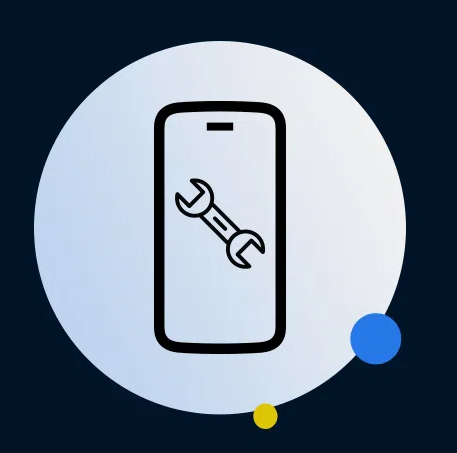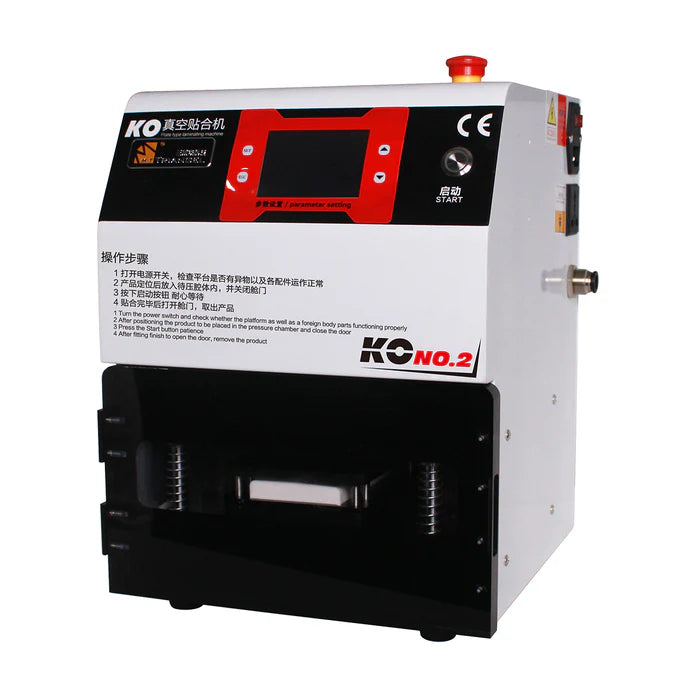In today’s fast-paced digital world, mobile phone repairs are in high demand. As a mobile phone repair entrepreneur or technician, improving your repair efficiency can not only boost your bottom line but also enhance customer satisfaction. Efficient repairs mean more jobs completed in less time, fewer errors, and ultimately, happier clients. Whether you’re running a busy repair shop or working as a solo technician, optimizing your workflow is key to success. In this guide, we’ll explore practical tips and strategies to help you streamline your mobile repair process.
1. Invest in the Right Tools and Equipment
One of the most critical factors for improving mobile repair efficiency is having the right tools and equipment. Without the proper tools, repairs will take longer and have a higher chance of error. Here are some essential tools every mobile repair shop should have:
Essential Tools for Mobile Repair Shops:
- OCA Laminating Machine: The OCA lamination machine is an indispensable piece of equipment for mobile phone repair shops. When replacing a damaged mobile phone screen, the OCA lamination machine can complete lamination quickly and cleanly, improving the repair speed.
- Soldering Stations: Crucial for fixing or replacing small electronic components like charging ports or microchips.
- Bubble Remover Machines: Perfect for eliminating air bubbles when applying screen protectors.
- Heat Pads/Heat Guns: Used for loosening adhesive or to soften parts for easy removal.
- Precision Screwdrivers: A variety of screwdrivers are needed to handle small screws on modern devices.
- LCD Screen Separators: An advanced tool for safely separating screens from phone bodies.
Investing in high-quality tools may seem like an upfront cost, but it can significantly speed up repairs and prevent costly mistakes in the long run.

2. Master Repair Techniques
A skilled technician who understands the ins and outs of phone repairs can perform tasks much faster than someone who is still learning. To improve efficiency, consider honing these key techniques:
Learn Efficient Screen Repair:
- Use Screen Separators: Devices like the CP-150 15" LCD Screen Separator or CP-103 Rotatable LCD Frame Separator are indispensable for quickly and safely separating broken screens without damaging the device. These machines can save you valuable time compared to manual methods.
- Proper Adhesive Application: Whether you’re replacing the screen or applying a screen protector, using the right adhesive and tools will speed up the process.

Quick Component Replacement:
- Pre-Prepare Parts: Having a stock of common replacement parts like screens, batteries, or charging ports ready to go helps avoid delays while waiting for parts.
- Use Compatible Parts: Always use high-quality and compatible replacement parts. Using subpar parts might save money upfront, but the repair will take longer and increase the likelihood of having to redo the job.
Master Soldering and Micro-Soldering:
Micro-soldering is crucial for repairing delicate components on modern smartphones. If you’re not already skilled in micro-soldering, it’s worth learning. Mastering this technique will allow you to quickly fix or replace small components like charging ports, microphone connectors, or broken traces, saving you time on more complex repairs.
3. Organize Your Work Area
A cluttered workspace can slow you down and increase the chances of mistakes. Taking the time to organize your tools, parts, and workspace can drastically improve efficiency. Here’s how:
Set Up Zones for Different Repairs:
- Dedicated Repair Stations: Create different workstations for different types of repairs. For example, one station could be for screen repairs, another for battery replacements, and another for component-level repairs.
- Tool Organization: Use tool organizers or drawers to keep essential tools within easy reach. Having a tool for every job prevents time wasted searching for the right instrument.
Use Tray Organizers for Parts:
When disassembling phones, use part trays or magnetic parts organizers to separate screws and small components. This will not only save time but also reduce the risk of losing important parts.
4. Adopt a Systematic Repair Process
Having a set routine or process for repairs can greatly improve your speed and consistency. Rather than approaching each repair differently, establish a standard operating procedure (SOP) for common repairs. Here's an example process for screen replacement:
Standard Operating Procedure (SOP) for Screen Replacement:
- Prepare the Device: Power off the device and remove any SIM cards, SD cards, or other accessories.
- Disassemble the Phone: Remove screws and take the phone apart carefully. Use a heat gun or pad to soften adhesive if necessary.
- Remove the Broken Screen: Use a screen separator machine to separate the broken screen.
- Install the New Screen: Align the new screen carefully and press it into place.
- Reassemble the Phone: Put all parts back in place, tighten the screws, and reattach any connectors.
- Test the Device: Power on the phone and test the screen and other components.
By following a clear and systematic procedure, you can perform repairs more efficiently and with greater consistency.
5. Use Software and Inventory Management Tools
In today’s digital age, using software to streamline processes is an absolute must. Managing customer orders, keeping track of parts inventory, and scheduling jobs can be a huge time-saver.
Implement a Repair Management System:
There are various mobile repair management software solutions available that help you organize work orders, track the status of repairs, and keep detailed records of repairs for future reference. Some popular options include:
- RepairDesk
- Mobile Defi
- RepairPal
Inventory Management Software:
Track parts and components using inventory management software. This will help you avoid running out of stock, prevent overordering, and keep your repair shop organized.
By using management tools, you can keep track of inventory, customer orders, and progress without wasting time on manual records.
6. Train Your Team (If Applicable)
If you run a team of technicians, it's important to ensure that everyone is on the same page. A trained and knowledgeable team will work together efficiently and complete repairs faster.
Continuous Education:
- Stay Updated on Repair Techniques: New models and repair methods emerge all the time. Regular training on the latest devices and repair methods can keep your team efficient.
- Focus on Speed and Precision: Speed should never come at the cost of quality. Ensure that your team focuses on both the speed of the repair and maintaining a high standard of quality.
Delegate Tasks:
- Assign Specialized Roles: If you have a team, consider assigning specialized tasks based on skill sets. For instance, some technicians might specialize in screen repairs, while others focus on battery replacements or soldering. This ensures that each task is completed quickly and competently.
7. Use Quality Parts and Avoid Cutting Corners
It can be tempting to use cheaper, lower-quality parts to save money, but doing so can actually slow you down in the long run. Low-quality parts may lead to frequent returns, unsatisfied customers, and longer repair times. Using high-quality replacement parts ensures that repairs are done right the first time and avoids the hassle of redo jobs.
8. Streamline Customer Communication
Clear and efficient communication with your customers can also improve repair efficiency. Setting expectations up front, keeping them informed of the repair status, and following up post-repair can reduce time spent on customer-related issues.
Set Clear Repair Time Estimates:
By setting realistic repair time estimates and informing customers of any potential delays, you can prevent frustration and time wasted on unnecessary inquiries.
Offer Walk-in and Appointment Options:
To streamline your workflow, offer walk-in services and schedule appointments in advance. This allows you to plan your day better, ensuring that you have enough time for each repair job.
Conclusion
Improving mobile phone repair efficiency is about streamlining your tools, processes, and communication. By investing in the right equipment, organizing your workspace, implementing clear repair processes, and using software tools to manage your inventory and customer orders, you’ll be able to complete more repairs in less time, ensuring that your customers stay happy and your business thrives. Always remember, efficiency doesn’t mean rushing—it means doing the job right the first time while minimizing wasted effort.
By applying these strategies, you’ll not only boost your repair speed but also improve the overall quality of your service, setting your mobile repair business apart from the competition.
You may also like:
How to Use the Laminating Machine
How to Remove Air Bubbles from Screen Protectors
LCD Screen Separator Operation Guide



